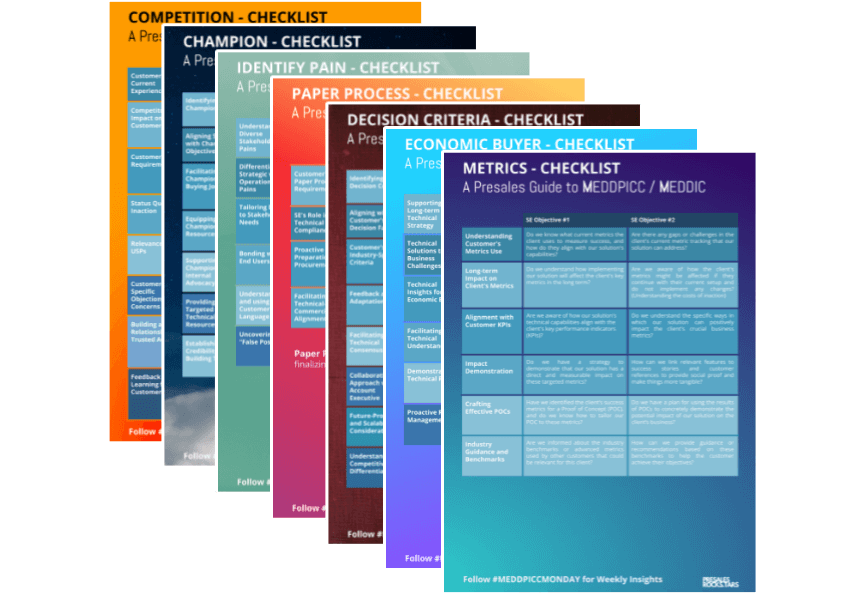Why Your Demo Is More Than Just a Product Tour
For a long time, I thought a demo had one main purpose:
To educate the customer about our product.
I was wrong.
On many levels.
A demo can do a lot more. It can create urgency, show value, remove complexity.
But more than anything – it’s a trust test.
The way you show up during your demo has a big impact on how you’re perceived:
- Do they trust you?
- Do they believe you “get” their situation?
- Do they want you in the room when they make a buying decision?
That’s where the trusted advisor mindset kicks in.
If you’re just showing features, you’re replaceable.
But if you guide, adapt, and listen – you become part of their decision-making process.
The Trust Equation: A Framework Every Presales Professional Should Know
In The Trusted Advisor, David Maister introduced the Trust Equation:
Trust = (Credibility + Reliability + Intimacy) / Self-Orientation
Quick breakdown:
- Credibility → Do you seem like you know what you’re doing?
- Reliability → Can I count on you to follow through?
- Intimacy → Can I be open with you without feeling awkward?
- Self-orientation → Are you in this for me, or for yourself?
This applies directly to demos.
Because in 30–60 minutes, your customer will subconsciously evaluate:
👉 Can I trust this person to guide me through a tough buying decision?
Or:
Are they just here to show their product and tick a box?
What Your Demo Says About You (and Why It Matters)
Most SEs don’t actively think about trust during their demo.
But your customer does – without even realizing it.
- If you ignore what was said in discovery, they notice.
- If you answer everything with confidence – even when you’re guessing – they notice.
- If you push for next steps before they’re ready – they notice.
All these small moments tell a bigger story:
Are you here to help? Or to sell?
Trust-Killing Demo Habits to Avoid
Let’s start with what not to do.
These are common habits that destroy trust in demos – mapped to the Trust Equation.
| ❌ Breaks Trust | Trust Factor |
|---|---|
| Giving a generic product tour – “Let me show you everything.” | Credibility – looks lazy. |
| Ignoring what they told you in discovery | Reliability – no follow-through. |
| Showing everything, even if it’s irrelevant | Self-orientation – more about you than them. |
| Talking the whole time | Intimacy – no space to build connection. |
| Cutting them off mid-sentence | Credibility – you assume too much. |
| Dodging objections | Intimacy – makes you feel slippery. |
| Showing off your favorite feature | Self-orientation – nobody cares what you love. |
| Bluffing through technical questions | Credibility – dangerous territory. |
| Blaming others for product gaps or issues | Reliability – doesn’t feel like ownership. |
| Reading a script | Intimacy – robotic = forgettable. |
| Using jargon they don’t understand | Credibility – confused minds don’t trust. |
| Getting defensive when challenged | Intimacy – trust dies in conflict. |
| Pushing for next steps too soon | Self-orientation – feels salesy. |
| Promising roadmap features as reality | Credibility – if they find out, you lose it all. |
| Ignoring disengagement | Intimacy – proves you’re not paying attention. |
| Only talking to the decision-maker | Intimacy – alienates others in the room. |
| Not summarizing what you’ve shown | Reliability – feels rushed and messy. |
Demo Behaviors That Make You a Trusted Advisor
Now let’s flip the table.
These are habits that build trust and make you look like a real partner.
| ✅ Builds Trust | Trust Factor |
|---|---|
| Tailoring the demo to their situation | Credibility – shows real prep. |
| Referencing previous meetings | Reliability – shows follow-through. |
| Only showing what’s relevant | Self-orientation – makes it about them. |
| Asking questions throughout | Intimacy – creates dialogue. |
| Letting them finish their thoughts | Credibility – shows respect. |
| Exploring objections with curiosity | Intimacy – builds psychological safety. |
| Tying features to problems they mentioned | Self-orientation – focused on outcomes. |
| Saying “I don’t know” when unsure | Credibility – honesty = strength. |
| Taking ownership when things go wrong | Reliability – builds confidence. |
| Being human, not perfect | Intimacy – people buy from people. |
| Using simple, clear language | Credibility – no need to show off. |
| Staying calm when challenged | Intimacy – shows maturity. |
| Asking “Does this make sense so far?” | Reliability – shows care. |
| Being honest about roadmap status | Credibility – no false hopes. |
| Addressing silence or disengagement | Intimacy – shows awareness. |
| Involving the whole room | Intimacy – everyone matters. |
| Recapping before moving on | Reliability – adds structure and clarity. |

From Demo Performer to Trusted Advisor: What Customers Really Want
Anyone can learn to use demo tools.
Anyone can memorize a script.
But not everyone becomes a trusted advisor.
It’s not about being slick or perfect.
It’s about:
- Listening more than you talk
- Making your customer feel safe, heard, and respected
- Being brutally honest when needed
- And removing complexity instead of adding to it
The most powerful demos I’ve seen weren’t the most polished ones.
They were the ones where the customer said:
“You really understand what we’re dealing with.”
That’s your goal.
It’s the Small Things That Make or Break Trust in Your Demo
Trust isn’t built in your pitch.
It’s built in the way you handle moments:
- When you get a hard question
- When something breaks
- When you could fake an answer but don’t
- When you adapt instead of pushing through your agenda
These little decisions either push you closer to being a trusted advisor –
or just another vendor demoing their product.
Want to Know If You’re Acting Like a Trusted Advisor? Watch Your Demo
After each demo, ask yourself:
- Did I make this about the customer – or about my product?
- Did I follow through on what we discussed in discovery?
- Did I create space for the customer to talk?
- Did I show up as someone they can rely on and trust?
If the answer is “not really”… don’t worry.
This is a skill. And like any skill, it can be practiced.





